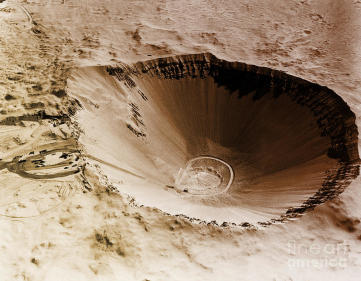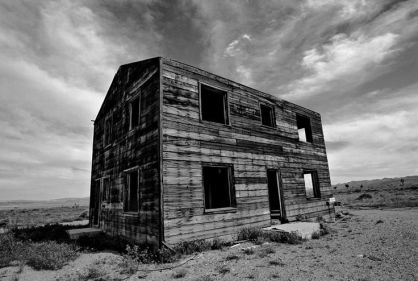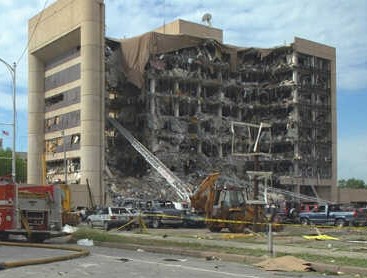Hunter’s Trophy

There was a pot-luck party in Arlington last night, with cocktails at Willow before, and it was a blast. It pinned me down up North, and I have been itching to get back to the farm and see if the first cut is needed on the lawn.
It is, but that is a matter for manana. I have been captivated lately by the anniversaries: Paul Revere’s Ride yesterday, the Gray Ghost disbanding his Rangers, and General Lee’s surrender to US Grant. It has been great to wander through the long corridors of history, and place the ancient events against the terrain that we know today.
There is another anniversary this morning. It was twenty years ago- within living memory for a lot of us- that a sick bastard named Timothy McVeigh parked his rented Ryder truck in front of the Alfred P. Murrah Federal Building in Oklahoma City and blew it to pieces. He killed 168 people, including 19 little kids and injured 600 more.
It is the single most deadly domestic terror attack in United States history.
It was memorable for me in two regards. First first for its brutal disregard of life and for the poor kids who got obliterated. Second was where I heard the news, and who I was with.
It was 1995, my political year working on the Hill. I had a good relationship with one of the Staffers on the Senate Energy Committee, and she wanted to take a tour of some of the old Manhattan Project sites, which are mostly all still out there. They may not be making bombs at them anymore, but instead have changed the mission statement to “nuclear remediation,” a ten-thousand year mission.
That is some kind of job security, even for the Federal Government. The Staffer did not want the trip to be managed by the Department of Energy, so found a reason to visit a Navy facility so she could request the DoN to manage the trip, which is why I was the escort officer assigned. The Staffer was tired of being shown an endless series of Potemkin villages.
On the 19th of April, 1995, we were staying in Las Vegas and traveled by rental car the 65 miles northwest to Nevada Test Site. With the exception of Pyongyang, the Test Site is the strangest place on earth. Maybe stranger than North Korea in terms of seeing the raw power that humanity has at its fingertips, or better said, the tip of a finger on a button.
We approached the gate and produced our identification. Deadly Force is authorized to protect the facility, so don’t move to the wallet too fast. We were met at the visitor’s center by the guy who was going to do the tour. He was in Class A uniform and turned out to not be some Public Affairs yo-yo but a real pro: he was a crusty Colonel of the Army Corps of Engineers and the last of the hard-rock miners who knew how to do the elaborate tunneling under the desert floor to place the nukes for testing underground.
The Clinton Administration had decided not to do any more tests in the interest of whirled peas or something, so his line of work was drying up, and this would be the end of the line, career wise. The unique skills required to properly align the access tunnel and the main shaft by which the device was placed, and then filled with concrete.
“I am not sure we could put together an experienced team, if the country needed to do another live test to see if the things still work.”
The Staffer looked concerned. “The trigger uses Tritium, and that element has a half life of seven years. How are we going to be sure that what we have still works?”
The Colonel shrugged. “They claim they have a mathematical model that does it just as well. I guess we will find out if they are right.”
I was surprised to find that there were all sorts of experiments on military equipment placed in the immediate proximity to the device, but more about that in a minute.

First, he took us around Area 10 to see some of the unique relics of the Atomic Age- the Sedan Crater from the shallow-buried 104 Kiloton test that produced more fall-out than any other conducted at the site. The crater was amazing.
“It is on the National Register,” Said the Colonel, gesturing toward the perfectly formed cone. I noticed someone had rolled a used tire from the rim, and it lay forlornly on it side at the very bottom.

Then we piled back in his staff car and drove through the eerie remnants of the 1940s and 50s: the viewing stands where they sat to watch tests- no kidding- and the remains of the houses and commercial structures they built to test the effects of blast on our cities.
Really weird vibes all around. The Colonel drove toward
Area 12, where there had been a permanent camp to support the testing program.
“So, that was the above-ground testing. There were a total of 828 underground tests here at the NTS. Going underground took much more time and trouble than surface or shallow-burial detonations. We had to develop new technologies for the experiments and we had to be able to get diagnostic information to the surface. We had to modify conventional drilling and mining equipment- that is where I came in- and new safety protocols had to be developed for the underground environment. The shafts and tunnels where tests were conducted needed to be stemmed and sealed to prevent the escape of radioactive materials from the explosions, and that was a trial and error process.”

He parked the car near an adit to a shaft and produced an industrial-grade, hell, a nuclear grade flashlight and we walked toward it. Then we went down into the tunnel leading to the last test
“This is the N-Tunnel, where the JULIN series of seven tests were to be conducted. “Hunter’s Trophy” was the last- we did not complete the series due to the passage of the Comprehensive Test Ban Treaty”
We got to the end of the tunnel and reached an enormous circular steel door, hung on a massive hinge above and below with a massive catchment. “The way it worked,” the Colonel explained matter-of-factly, “is that the mechanism holding the door open to the chamber where the device was located was released before the detonation.”
He shined the light around the chamber and back towards the adit. “In the time it takes for the ten-ton door to swing shut, the first powerful Electromagnetic Pulse (EMP) has been emitted ahead of the fireball that is liquefying the rock on the other side. The point is that behind us in the access tunnel there were samples of all sorts of military equipment- aircraft components, all sorts of electronic devices and sun. Obviously, if they were left in the path of the blast, they would be utterly destroyed by the fire of hell that followed almost instantly from the initial criticality of the bomb.”
“Of course,” said the Staffer, nodding.
I surmised that with the vault door closed, they got the effect without the direct blast. Instead, a complete sphere of molten rock was created, directly on the other side of the door. We went up and put our hands on it, imaging what was on the other side, just inches away.
Sometimes the sphere remained contained under the surface. Other times, the rock above collapsed, leaving a pattern of black circles of subsidence on the desert floor above.
We did not tour it, but that is also where Yucca Mountain is located, where they were going to store the decommissioned components of the nuclear arsenal and the spent fuel from the power plants.
We were riding away in the car, and heard the awful news about Oklahoma City on the radio. The Colonel was remarkably well informed on why it was so awfully destructive. He explained how the fertilizer bombs create a cloud of fuel that ignites almost simultaneously in a spherical blast of incredible power.
“Not that different from nukes,” he said calmly. “But it is a hell of a lot cheaper, and the materials are commonly available to just about anyone.”
And on this day, twenty years ago today, the Colonel had described in detail something that was ending, something that had threatened us since the first atomic weapon was detonated at Trinity Flat at Alamogordo in New Mexico.
And on that day riding back to the Visitor’s Center in the staff car across the Nevada Test Site, he described in detail something else was just beginning. Something that was cheap, available in the commercial marketplace and scary as hell.

Copyright 2015 Vic Socotra
www.vicsocotra.com
Twitter: @jayare303
